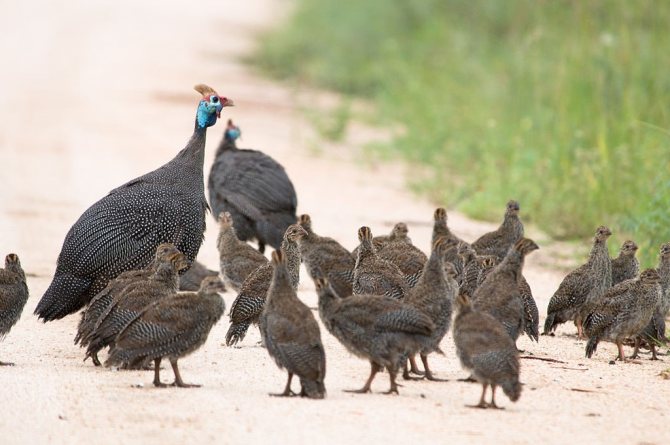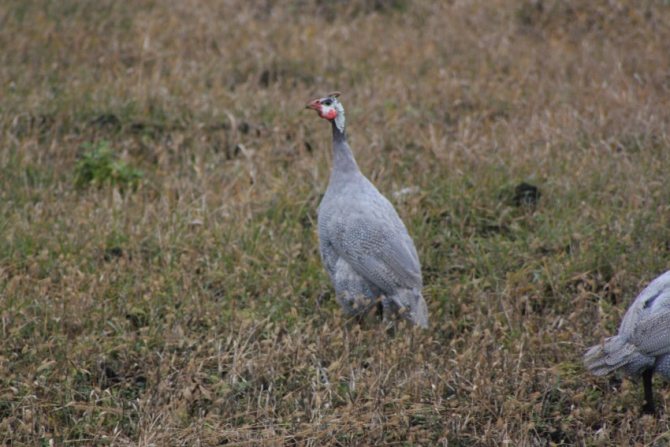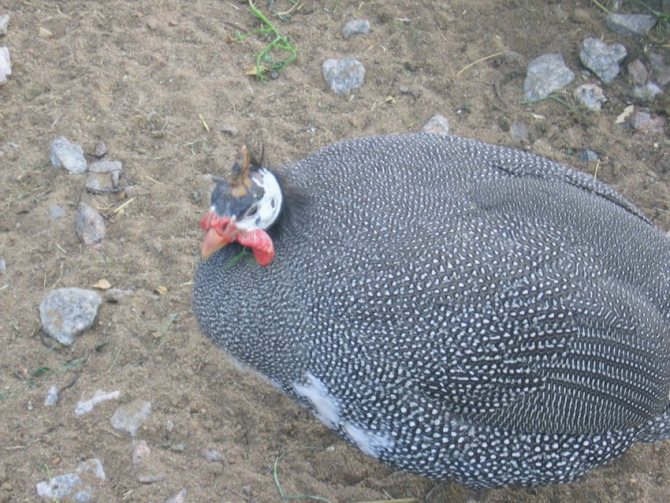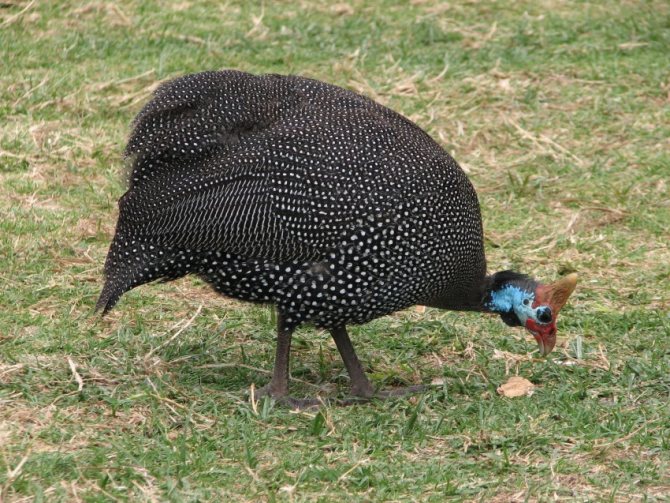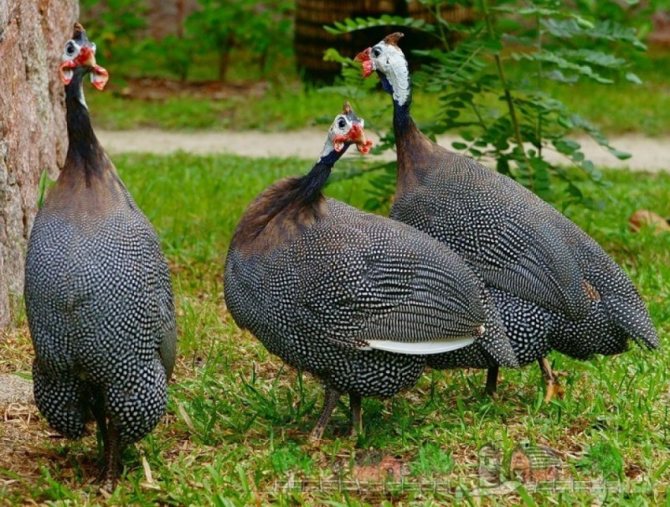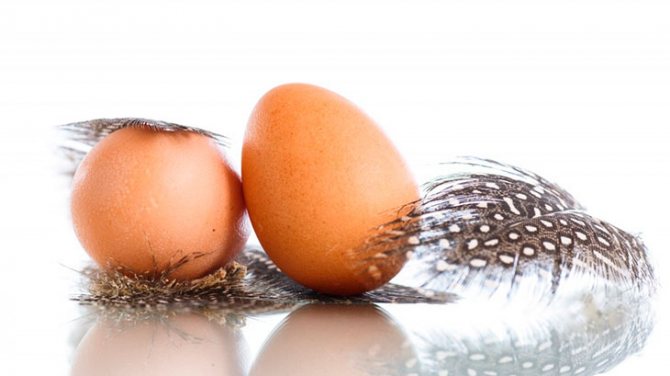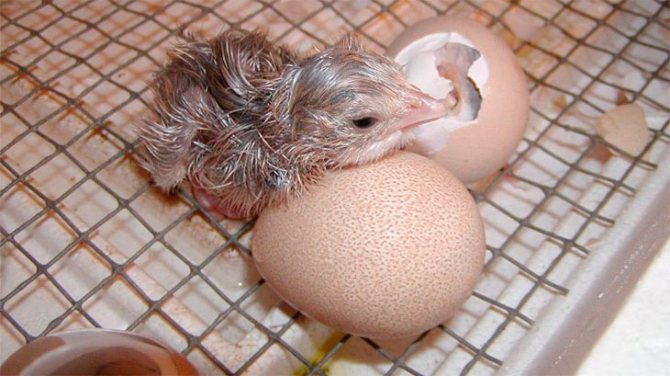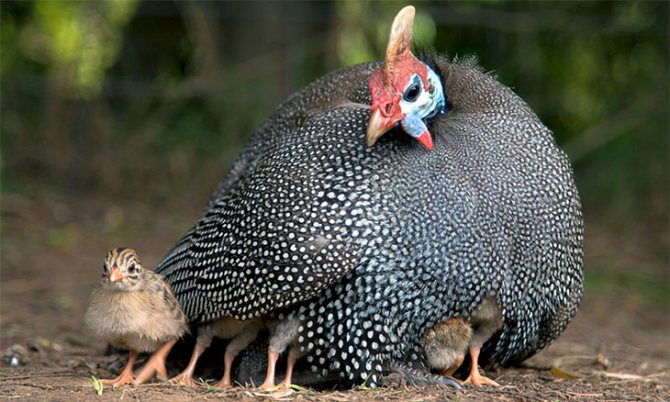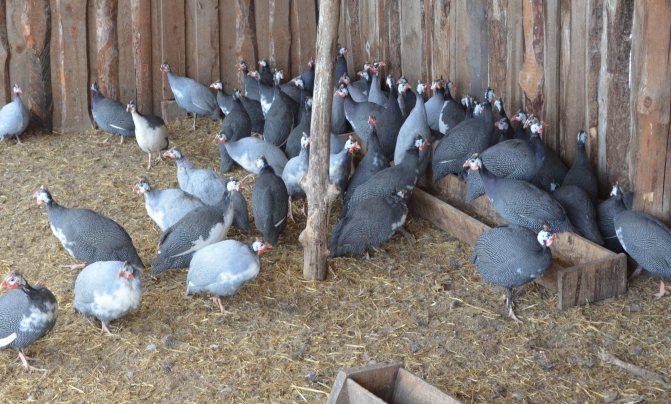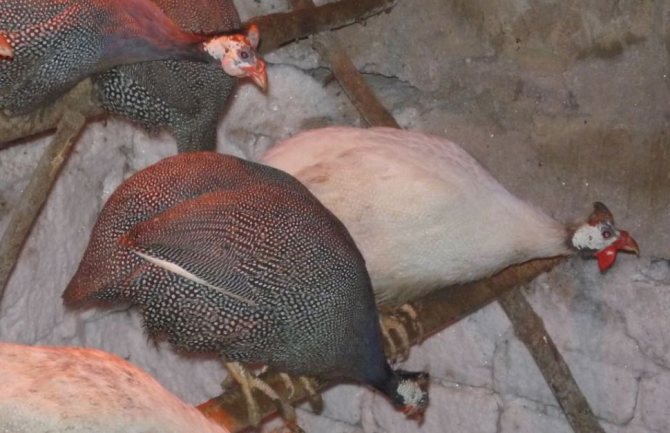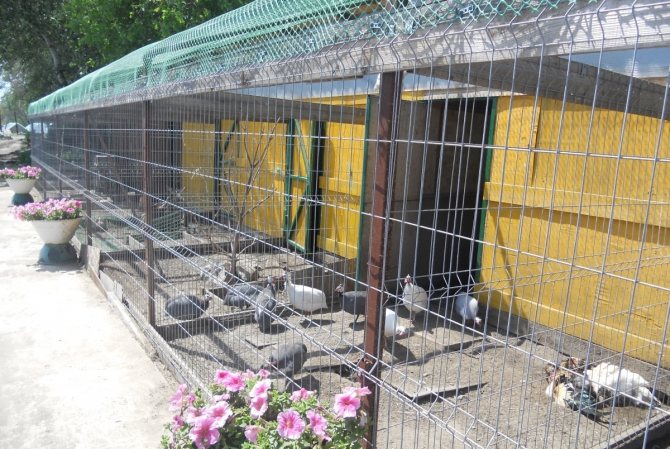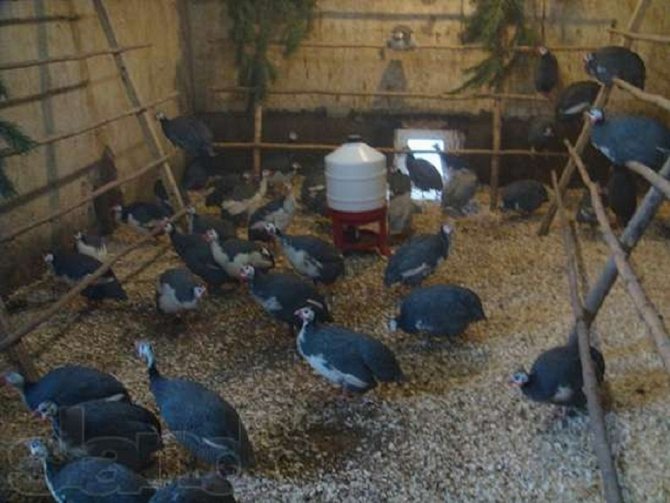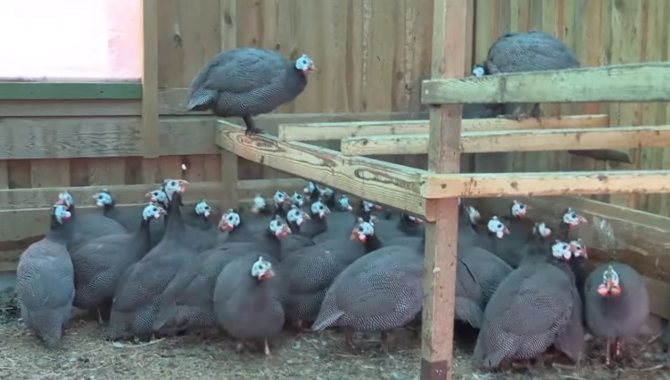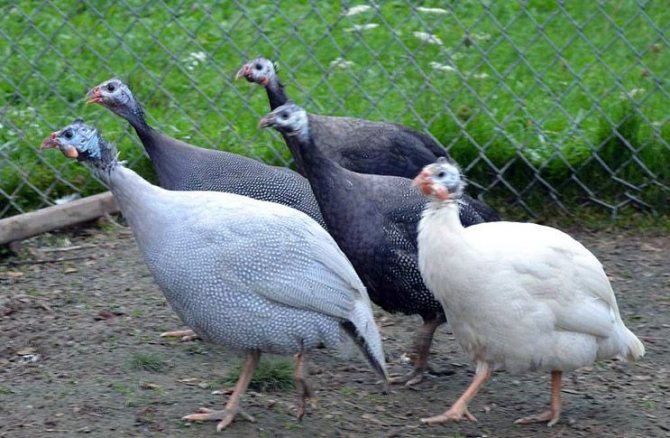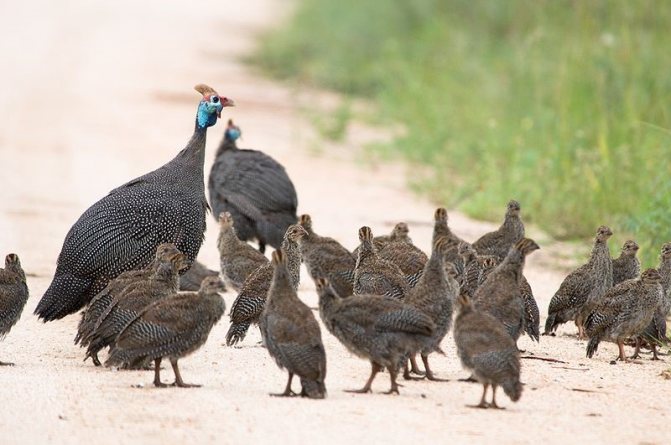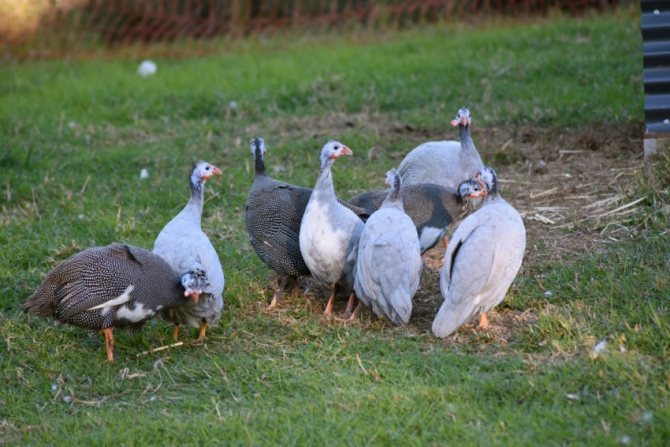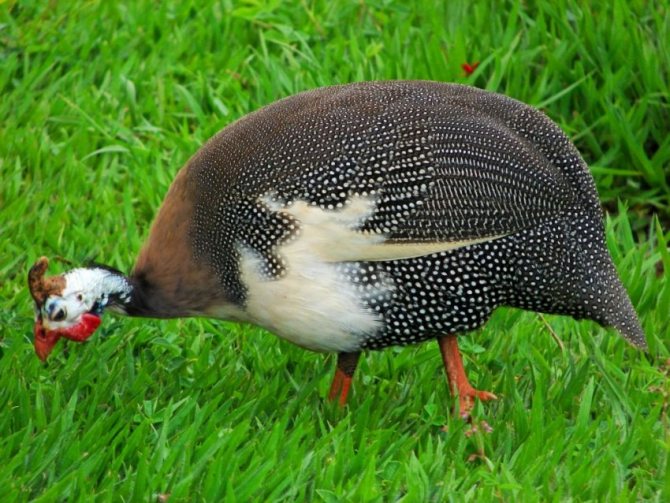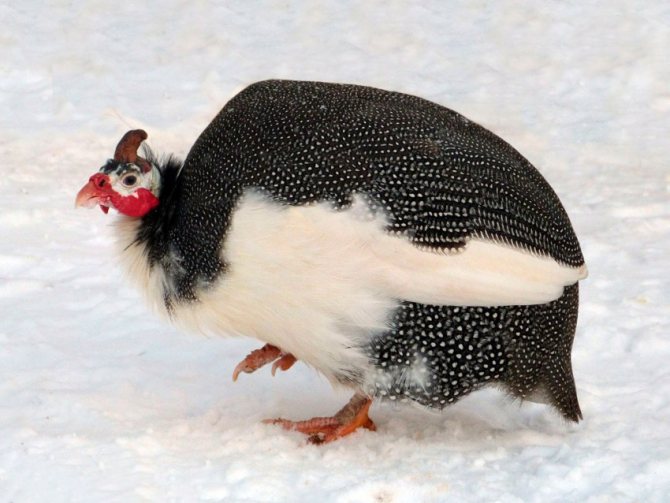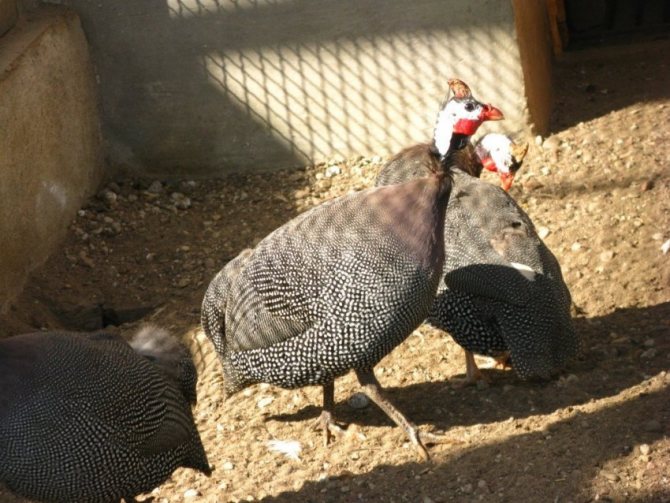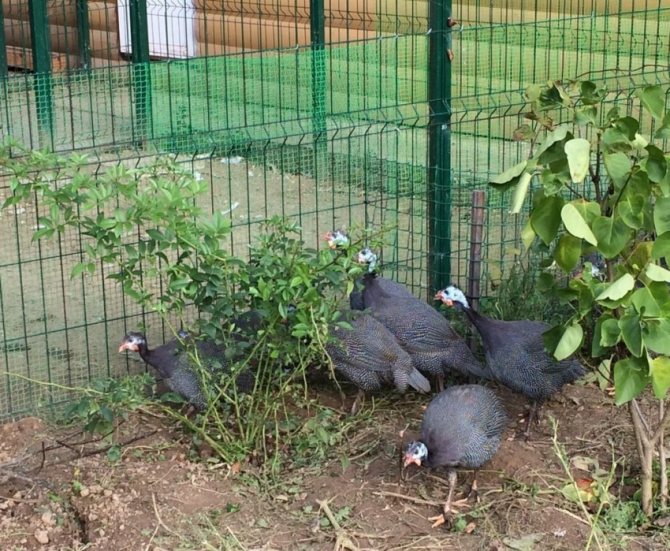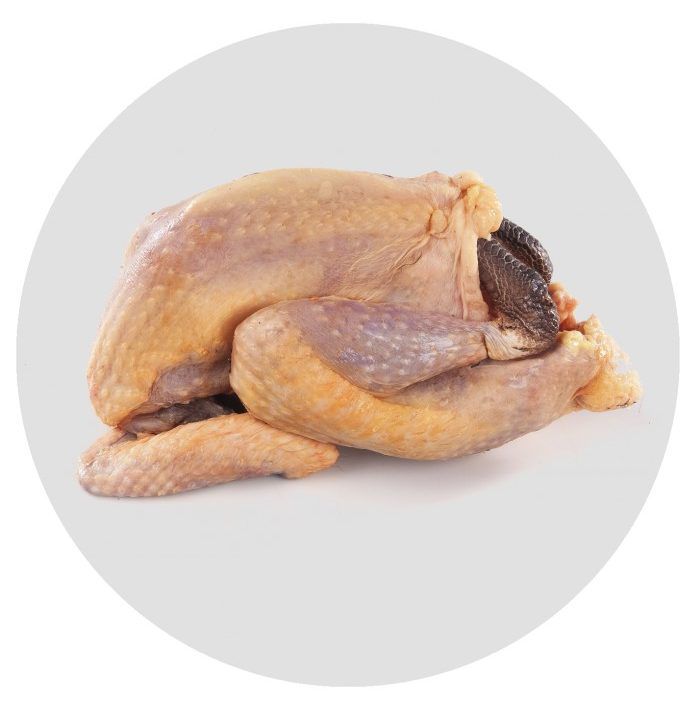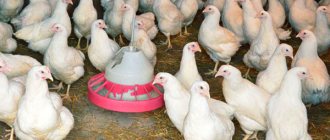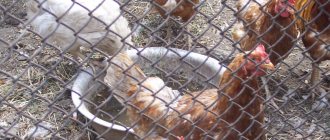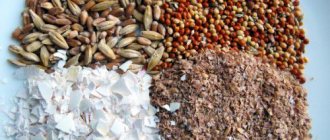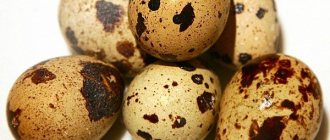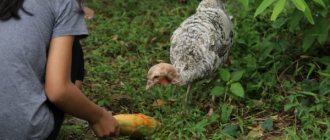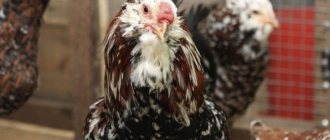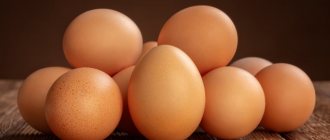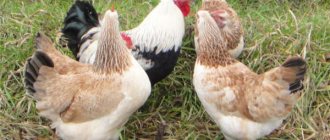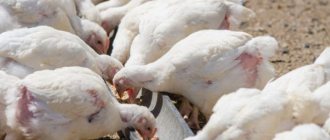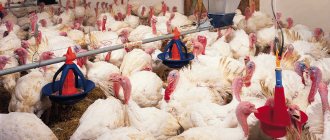Description of the species
Guinea fowl is a bird characterized by a growth on the back of the head and a red beard. The bird has a small head, devoid of plumage. The beak is shaped like a hook. The wings of the bird are short and round. The tail of the guinea fowl is short. Compared to the body, which in the bird is large and elongated, the head seems to be quite tiny. The neck is long. The color of the plumage is gray with even white circles. The head has a blue tint with red spots.
They prefer dry steppe and forest zones. Therefore, they live in Africa. The natural diet includes insects and plant foods. Juveniles start breeding during warm and dry seasons.
The bird is sensitive to climate change. Although it becomes more stable with age. Birds sleep in trees, and live in flocks. They have the ability to move quickly and, in case of urgent need, take off.
Guinea fowls take off only if absolutely necessary
The eggs of the species have a high quality of taste and the ability to store for a long time. Egg weight reaches forty grams. They have a hard shell and a brown tint. Egg shape is oval. In the conditions of incubation cultivation:
- eggs are harvested in the morning;
- lay out with a round part up in special sections;
- use exclusively clean eggs;
- Shelf life is seven days in a dark place with a temperature of no higher than six degrees, with moderate humidity.
Guinea fowl species are not often grown on farms. They are bred primarily for meat. Individuals are endowed with disease resistance. The meat yield from one carcass exceeds chicken by ten percent.
According to the color of the plumage, birds are divided into:
- Black guinea fowls.
- Dark gray.
- Blue.
- Purple.
- Beige.
- White.
The nature of the guinea fowl is active and careful. They do not like nesting places and often lay eggs in inaccessible places. Their weight reaches three kilograms.
Guinea fowls love to hide their eggs
Starting to lay eggs at the age of six months, they can lay a hundred eggs in six months. In properly organized conditions, they can lay two hundred eggs. The feathers of the species are used as a decorative element. As mentioned earlier, guinea fowls eat insects. At home, these are useful properties because they help fight pests.
Birds should be purchased from trusted people or on farms. engaged in their breeding. This will guarantee you the origin and health of the herd. There is no particular difficulty in growing the species. The only condition is to ensure proper conditions of detention.
Guinea fowl taste like a pheasant. They have high indicators of useful properties and muscle mass.
Breeding egg-laying guinea fowls
The way the guinea fowl rush is not very similar to the laying of domestic chickens. The hen finds a secluded place and lays its eggs there, and then she itself incubates them. But guinea fowls look for holes and depressions in the ground and prefer collective laying. This means that the laying hen lays eggs every day in the place where the whole flock is already laying.
For breeding, a young male and 2-3 females are selected at the age of 1.5-2 years. The maximum fertilization of eggs is observed in March-April.The male must be selected with a large growth on the head, as well as a large wax. Females, on the other hand, should have small "earrings", a soft voluminous belly, which means the divergence of the scrap bones for laying eggs.
Judging by the observations of breeders, white and light gray guinea fowls have a higher egg production, which means that how many birds lay eggs depends on the color of the plumage. Males of wild dark gray color reluctantly mate with lighter females, which cannot be said about their own kind.
Guinea fowls are not very good mothers. They can leave the clutch for a long time, which is why the chicks die. Artificial incubation of eggs is preferable. This period lasts 28 days. It is important to maintain a stable temperature and humidity in the incubator. At low humidity, the films under the shell can adhere to the body of the chick, thereby complicating the hatching process.
On days 21-23 after laying the eggs, they are checked for the viability of the embryo using an ovoscope (transillumination device). They are manual for checking one egg or stationary, in which you can place several pieces. There is also a way to check embryos without special equipment. It was used in the old days. They put an egg in a fine sieve and see what comes of it. If the chick is alive inside, then the oscillatory movements of the egg itself will become noticeable. But if the egg remains motionless, the embryo froze and must be removed from the clutch.
Small eggs from young females have a high percentage of chick freezing or weak cubs being born. For this reason, it is necessary to select for reproduction already sufficiently ripe and grown-up guinea fowls. The fertility of the male drops significantly after the age of two, which means that such individuals are sent for slaughter to obtain meat.
Breeding guinea fowls is not such a difficult task, provided that some of its features are observed. Their meat is dietary, and eggs have a higher value than chicken and even quail.
Care
They begin to grow in the same room, until the age of thirty days. Reaching the age of one month, they are released for free range. In order to obtain meat from individuals, it is recommended to grow them up to three months of age.
Monthly guinea fowls can be released for walking
Guinea fowl eggs are low in cholesterol. The productivity of growing them for the sale of eggs begins at the age of eight months. Since laying hens begin to lay at eight months. Sometimes laying hens can be carried at six months.
During the warm season, when the guinea fowl are walking in the meadows. caring for them is effortless. The main thing is to make a canopy from the rain and provide them with a roost. Since by the evening they will climb there. The farmer provides the birds with a large feeder for all birds to reach. Availability of clean water is obligatory.
They eat the same way as chickens and other birds. They can easily coexist with chickens. In order for them not to fly away, their wings are shortened.
Most farmers set up nests in the house. But guinea fowls find their nest on their own. in a distant place and with all the livestock there they rush. Remove eggs from the nest in time.
In winter, they are kept in a poultry house with a temperature regime of at least twenty degrees. Cover the floor with hay and straw. Keep the room warm and dry. Change the bedding in time and provide them with fresh air. To do this, you need to equip a ventilation system. It is also recommended to prepare the nest in a remote place, or the guinea fowl will find it by itself. But not the fact that you can get to this place.
Make them on a hill in winter, if it's not very cold outside, let them go for a walk. Give them a bath of sand and ash, where they will clean the feathers and a feeder with chalk and shells.
Pick up the first batch of eggs from the hen
The size of the guinea fowl is the same as the chickens, and is recently grown at home. When you have this bird, you will understand that they do not require the intensive care that other birds need.
When the guinea fowl begins to lay, be sure to provide it with a reinforced diet. It must be balanced and fortified.
Provide hens with constant access to clean water and a feeder. When growing eggs in the incubator, gradually spray water over them. When the guinea fowl lays the first batch of eggs, it is not planted on eggs, otherwise it will affect the number of eggs. Thanks to the ability to preserve eggs for a long time, you can enable the hen to lay as many eggs as she can in one roost.
In winter, they are provided with light for a long time, exactly how much depends on the condition of the room, but it is better from morning to ten o'clock at night.
They lay eggs during the warmer months. If you keep individuals indoors, do not wait for egg laying. The species began to be domesticated recently, they prefer free content and will carry on pasture. If the female often lays eggs in an unknown location, pay attention to her calls. They, like hens, when they lay eggs, notify the whole district about the event. Follow the sound and reach the egg-laying site.
They are not whimsical in content and are beneficial in that they destroy all insects on your site. But keep them free-range to get the eggs they expect.
Content:
For any poultry farmer, a very important knowledge is the correct determination of the timing of the onset of the egg-laying period for a particular bird. This plays an important role in the correct organization of work on the farm, especially in large production environments. Yes, and the owner of a small herd, such knowledge will not interfere. When do the guinea fowls begin to rush and what does it depend on?
The following factors affect egg production:
- creating the right conditions of detention;
- perfect, balanced nutrition;
- compliance with the temperature regime.
Conditions for keeping guinea fowl on a home farm
The experience of many poultry farmers has shown that guinea fowls are unpretentious in private keeping. Such birds do not require unusual adaptations and conditions.
Premises
An ordinary farm building can act as a poultry house. Sufficient area - 1 square meter for 2-3 individuals. The room must be insulated from drafts, protected from the penetration of precipitation and predators. First, it must be well washed, disinfected with a solution of slaked lime (1 kg per 1 square meter of space).
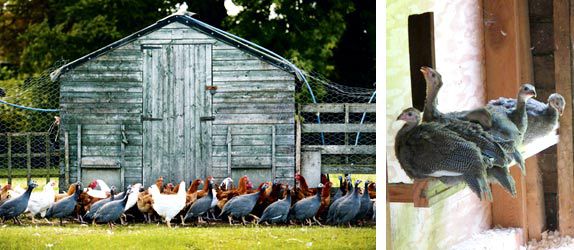
Guinea fowls need a spacious perched house
Guinea fowls do not like excess moisture. The floor is covered with sawdust, peat, sand and straw. Such a mixture perfectly absorbs excess water and additionally warms. The filler is changed at least 1 time in 2 weeks, it is permissible more often as it gets dirty or wet.
The walls are insulated following the example of a standard chicken coop. Artificial heating is required from late autumn to early spring, when the room temperature drops below + 15C. The guinea fowl will endure cooler temperatures, but egg production will noticeably decrease.
Daylight hours for an adult flock are at least 12 hours. Artificial lighting is used as needed. It is good to have south-facing windows.
Roosts are essential as with other flying birds. They are made from thin beams. For every 5 heads, 1 m of length is taken. Installation is carried out at different levels, starting from 50 cm from the floor.
Required inventory
The standard set is enough:
- rake, bucket and mop. For cleaning the premises;
- feeders and drinkers. Standard chicken is used. In view of the mobility of the guinea fowl, it is possible to provide feeders with restrictive nets or windows, drinkers with a metered water supply. This will prevent food scattering and liquid splashing;
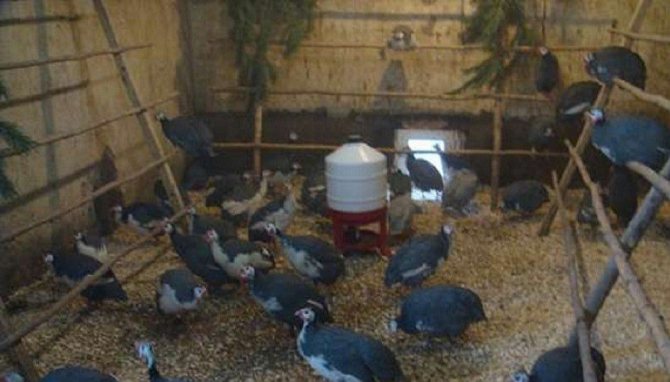

Guinea fowls near a feeder with a dispenser
- large troughs. Experts recommend having special heavy tanks for ash and sand baths. It should be difficult to turn them over. Guinea fowls love to clean themselves collectively, actively digging filler for the sake of playing. This procedure is necessary to eliminate parasites and dirt from the feather cover. It is carried out at least once a week. More often in the summer.
Guinea fowls do not need nests as such. It is enough to have a thick layer of litter on the floor (15-20 cm). Females lay their eggs in collective heaps in the thick of grass in the morning hours. To make them easier to collect, the birds are not released in the first half of the day. The paddock is opened only after they are demolished.
Walking the birds
From 14 days of age, the guinea fowl must be released to fly. Walks are organized in a closed area in good weather. Some breeders prefer to cut off the extreme wing link in the first day after birth.
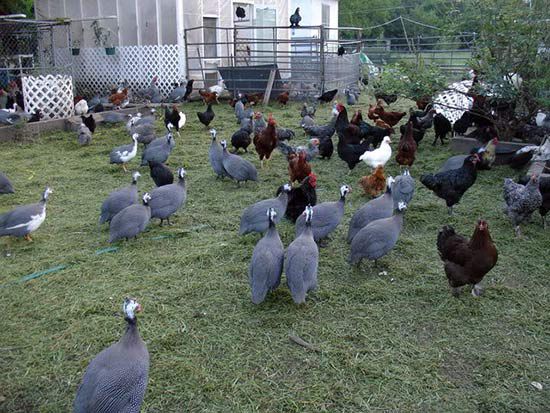

Walking guinea fowl
A walking area will be organized around the poultry house. For 1 bird, 30 square meters of space are calculated. The territory is fenced off with a net of at least 2 m in height. There must be a lot of shrubs within its limits. It is advisable to put a small house in the center, where the guinea fowls can hide from the heat and precipitation. Especially stubborn individuals can spend the night there, who did not want to return to the premises for the night in the summer.
From above, the platform can also be closed with a soft nylon mesh, although the accustomed domesticated flock rarely makes flights. Guinea fowls have a strong affection for their family. Usually, runaways do not leave the fence further 5-10 m, after a while they try to get back. But it is difficult to fully insure against losses. In addition, predators can be found outside.
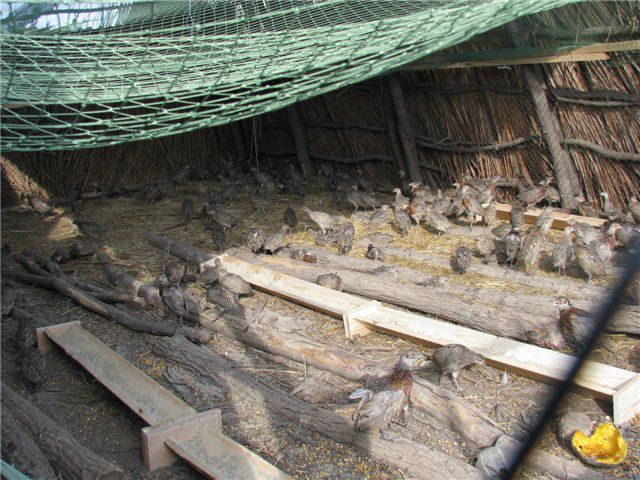

Covering the walking area with a net to prevent the bird from flying away
Particularly resourceful farmers enclose their garden or vegetable garden, inviting their pets to walk there. In the process of walking, the flock behaves noisily, but the vegetation does not twitch or trample.
Proper maintenance in winter
During the cold season, to maintain productivity, it is important to maintain comfortable conditions:
- heat. The temperature is raised to + 18C using heaters. The floors should be heated evenly, just like the air. Lack of heat will lead to excess humidity, as a result, to colds;
- lighting. Daylight hours are extended to 15 hours. A lack of light will cause vitamin deficiency, reduce the quality of the shell and egg content, and increase the risk of rickets in layers;
- restriction of walking. When the air temperature is below -10C, walking stops. In warmer conditions, the birds are released, but first they loosen the snow, break the ice crusts;
- airing. In winter, less air enters the room; mustiness may occur. To prevent this from happening, air ducts are made, which are opened as needed.
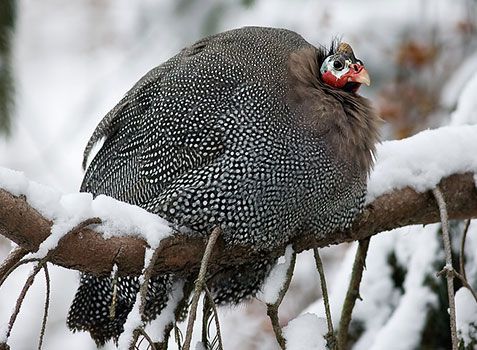

Guinea fowls tolerate winter easily
What temperature do guinea fowls need?
These birds live in Africa and Madagascar, and therefore they need warmth in the poultry house. In the wild, guinea fowl can be found in dry steppe or forest areas.
The main food for birds is insects and plants. Guinea fowls live in numerous flocks, and climb trees to spend the night. The external slowness of the birds is deceiving, they are very nimble, and if danger arises, they can make small flights. Because of this feature in the household, birds are advised to trim their flight wings or to enclose the walking area with a high fence with a mesh roof.
With the onset of a warm, dry season in nature, the breeding period begins in young individuals. Increased dependence on climatic conditions is a persistent factor in young animals, but it weakens slightly as they grow up.
Guinea fowl can live for about 10 years. However, in the household it is not advisable, and therefore they are kept for a maximum of three years, for the constant renewal of the herd.
Breeding
Guinea fowl is very profitable to breed in the household. Among the advantages of royal birds, the following are distinguished:
- good egg production;
- healthy dietary meat rich in iron, vitamins, amino acids;
- high survival rate of young animals - up to 95%;
- free range, beneficial: the destruction of various insects that harm plantings;
- resistance to various diseases, good immunity;
- the possibility of joint keeping with other agricultural birds;
- the ability to withstand various climatic conditions.
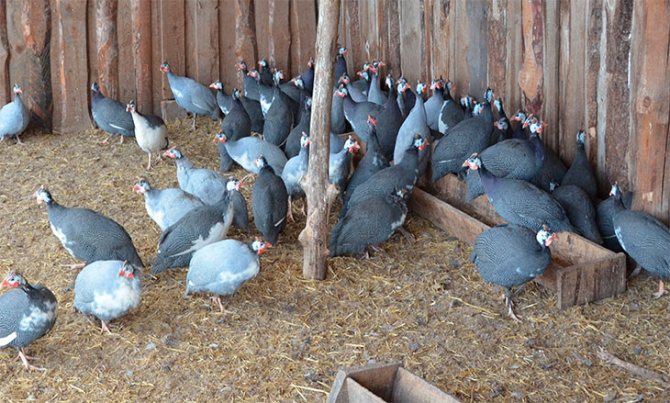

To breed guinea fowls at home, you need to buy several feathered individuals. In this case, the following conditions must be observed:
- one male must be at least five females younger than him by 2 months;
- provide long walks in the wild;
- if males behave aggressively, they can be deposited after a single mating, since the female lays fertilized eggs for 20 days;
- eggs should be collected in the morning, laid out with the sharp end down - this will keep the embryos active for about 14 days.
Another way of breeding offspring is also widespread - buying ready-made young stock. It is important to pay attention to the following factors:
- Chicks should be healthy, without wounds, covered with an even soft fluff, have clean bottoms, wings tightly pressed to the body. Healthy chicks are active, respond well to sounds, it is enough to lightly knock on the box, as the guinea pigs will make a noise;
- You should buy about 20 day old chicks;
- Chicks 2-3 weeks old can be released to walk on their own, so they will learn how to get food.
If the offspring is hatched by a female hen / turkey, there will be less problems with the chicks. The period from April to July is the optimal time. If this is not possible, the young can be produced in an incubator.
Prepared eggs are folded according to the instructions and wait 27 days, during which the humidity in the room is monitored.
What egg products look like
Breeding guinea fowl is beneficial not only to get eggs. Meat products are superior in nutritional value to chicken, the average carcass weight is 3 kg. It is beneficial to let the birds out into the garden, where they will be happy to destroy harmful insects, their favorite delicacy is the Colorado potato beetle. In this case, the guinea fowl will not trample the plants.
Egg products deserve special attention. It is dietary and overtakes quail in properties.
Although the eggs are smaller than those of chickens, they are of higher quality. The following can be said about the characteristic features:
- on average, one egg weighs up to 50 grams;
- eggs are pear-shaped;
- thanks to the thick and strong brown shell, the products are difficult to damage during transportation.
Eggs can be stored for a long time at a temperature of 0 - +10 degrees for six months. The yolk contains more nutrients than eggs obtained from chickens.
What are the features of guinea fowl eggs?
The guinea fowl egg has an unusual, slightly triangular shape. Weighs about 40-46 g. Several important points can be attributed to their features.
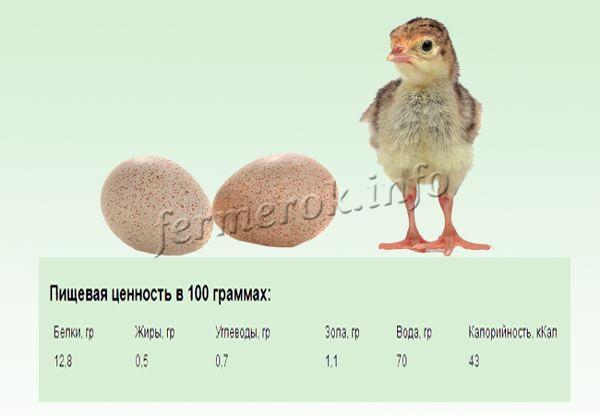

Nutritional value of guinea fowl eggs
- The shell is very hard compared to chicken.
- Cholesterol levels are low.
- Hypoallergenic - recommended for allergy sufferers.
- Despite its smaller size, the composition contains 1.5-2 times more vitamins, minerals and other useful substances.
- They are stored for up to six months in the refrigerator, and at the same time they do not lose their benefits.
- Not susceptible to salmonella contamination.
An interesting feature is that the larger and more mature the guinea fowl, the larger it lays eggs. Young individuals give very small testicles, they cannot even be used for incubation.
Performance characteristic
The egg-bearing period begins at 8 months, but in some representatives the beginning of clutching occurs at six months of age.It is recommended to collect egg products immediately after emergence, otherwise the female turns into a brood hen and her clutch stops. In 6 months, approximately 100 eggs can be obtained from one bird.
By creating conditions similar to those in which guinea fowls live in freedom, the productivity of egg production can be doubled. There is also an official record, according to which one guinea fowl laid more than 300 eggs in 365 days.
What care do guinea fowls need?
Before breeding guinea fowls, you need to take care of acquiring a healthy livestock. It is best to buy birds on a farm with good reviews, this will serve as a kind of guarantor that they will not slip a marriage here.
Growing is about creating favorable conditions, which can be achieved by observing the following rules:
- for the first 30 days, all livestock are kept in a single herd;
- from the second month, the bird can be released to walking areas;
- as already mentioned, guinea fowls fly well, and to prevent escapes, the pens are covered with nets or the feathers on the wing are trimmed to the birds.
If you want to receive meat products, young animals must be slaughtered at the age of three months.
Guinea fowls have a non-conflict character and will not sort things out with other inhabitants of the poultry yard. You can feed them like ordinary domestic chickens.
What you need to know about egg-laying
Birds' eggs appear in the warm season. With the approach of this period, it is recommended that the feathered wards be provided with free range. Due to the fact that the domestication of guinea fowls occurred not so long ago, they will carry worse indoors. You can put nesting houses on the street, where the bird will climb into the clutch.
In the event that the chicken has found a secret place for a nest, it is quite easy to find it. After the laying occurs, the bird will begin to make characteristic sounds, by which it is easy to determine the location of the cache.
From the beginning of the egg-laying period, which falls on 6–8 months, the bird gradually increases the number of laid eggs for 90 days, then a noticeable decline occurs. At first, you can get 2–5 eggs from one guinea fowl, then this indicator will go in the direction of growth.
Under suitable climatic conditions, the egg-laying period can be characterized as follows:
You can equip the chicken coop with special installations that will regulate the climate and lighting when the day begins to decrease. In artificial conditions, the bird can lay eggs for 9 months, regardless of the temperature outside.
Why do guinea fowls stop rushing?
Often novice poultry breeders are faced with the fact that guinea fowls stop laying eggs, although the laying season should, in theory, continue. The problem most often lies in the unfavorable conditions of detention:
- It's cold in the poultry house... If the shed is not insulated and the temperature drops below + 12 ° C, the hens will “strike”.
- Non-compliance with sanitary rules... If the floor of the house is dirty, the guinea fowls refuse to rush. It is necessary to clean up the house more often, change the bedding and ventilate the room.
- Drinking water is dirty... To please the hens, the water in the drinker needs to be changed regularly to keep it fresh. If this is not done, the food eaten by birds will be difficult to digest. This is especially important if the bird is eating compound feed.
- Poor nutrition... In the cold, guinea fowls lack the insects they love so much. If you do not compensate for their absence with protein mixtures, egg production will drop. The lack of greenery also negatively affects the number of eggs laid - you need to replenish it with root crops and vegetable waste. In warm weather, a lack of nutrients can be observed in the absence of calcium-containing additives, yeast, bone meal, fish oil, fermented milk products, legumes and grains.
- Stress... Guinea fowls are very shy birds. To break egg-laying, it is enough to scare them or change the food.Sometimes even changing the type of bedding can throw them off balance.
In winter, it is recommended to give finely chopped needles to guinea fowls - this is a generous source of vitamin C. But it is strictly forbidden to give needles to the bird in spring, when the trees are growing. At this time, there is too much concentration of essential oils in the needles, which can harm the guinea fowl.
How color affects egg production
Scientists conducted an experiment, during which it turned out that the suit affects the productive qualities. On average, it looks like this for the period of egg production:
In addition, the individual characteristics of the birds are important.
If you have the opportunity to regularly consume guinea fowl eggs, consider yourself lucky. Why can I say so? This is a hypoallergenic and highly valuable product that helps the body to cope with many diseases. Today we will take a closer look at two questions: what are the benefits and harms of guinea fowl eggs? When do these birds start laying eggs? Let's start with the second one.
At what age do guinea fowls begin to fly?
Guinea fowl are bred both on an industrial scale and at home. Both are rare in our area. Keeping ordinary chickens and eating familiar eggs is calmer for us. This can be explained by the higher price of guinea fowls, as well as the lack of information about the content of this species of birds.
Meanwhile, the guinea fowl rush pretty well. There are ways to influence this process, and we'll talk about them. Usually the first egg of the guinea fowl lays at the age of 6-8 months. One bird produces about 100 eggs per year.
At what age do guinea fowls rush at the plant?
The sexual maturity of factory guinea fowls occurs earlier than that of birds kept at home. The reason lies in special feed additives that accelerate the development of birds. Of course, such enrichment of the diet of guinea fowls does not benefit people who then eat their meat or eggs. Therefore, when breeding birds at home, be patient to wait for natural puberty. The factory guinea fowl begins to lay at 6 months.
At what age do guinea fowls begin to lay at home?
Those who breed guinea fowls at home usually want to have a completely natural product without all kinds of chemical impurities. Therefore, these people allow the birds to develop naturally. So when do guinea fowls make their first clutch of eggs in their natural environment? At the age of 8 months.
What does the egg production of guinea fowls depend on?
How many eggs one guinea fowl will give per year is influenced by many factors:
Air temperature, daylight hours, diet, breed, age of the bird.
The length of the laying period largely depends on the conditions of detention. So, if the birds are kept in a warm room all year round, this period will not be less than 9 months. The first clutch usually occurs in February or May and the last in October or November. If the temperature in the aviary is kept at least 14 ° C throughout the winter, and the daylight hours for the birds will continue from 7 to 22 hours, then they will lay eggs all winter.
Under certain conditions, the guinea fowl can be carried all year round.
The number of eggs in one clutch is influenced by the diet and the length of daylight hours. Complete feed mixtures, supplied with all the necessary substances, can significantly increase the volume of one clutch.
On average, from the moment when the guinea fowl begins to lay eggs until the moment when egg-laying ends, the owner receives 70-110 eggs. Cases have been recorded when one bird gave the owner more than 300 eggs. This rarely happens with home breeding and only when ideal conditions are created.
Also, the choice of the breed affects the egg production:
The maximum for gray guinea fowls is 90 eggs, the limit for blue guinea fowls is 100 eggs, and white guinea fowls yield a maximum of 110 eggs.
The age of the bird is another factor of importance in this issue.The older the bird, the fewer eggs it usually lays. But don't ignore the fact that guinea fowl eggs get larger over time. There are cases that their number does not decrease over the years.
Chicken and Guinea Fowl Egg
Factors affecting the number of eggs
The owner of the guinea fowl can influence their egg production by improving the living conditions. What can increase egg production in layers:
- Favorable treatment. It is desirable that the house temperature does not drop below 14 ° C.
- Compliance with "housing" standards. For 5 birds - at least 1 sq. m area.
- Lighting. At the age of 5 months, guinea fowls need 8-hour daylight hours, and from 6 months, the lighting is increased by an hour per week - up to 16 hours. In winter, guinea fowls need light from 7 am to 10 pm.
- Separate poultry house. Guinea fowls should not be kept together with other poultry - they need a separate insulated room in which collective nests are organized.
- Air mode. In the poultry house, a ventilation regime must be provided.
- Good nutrition. Combined fodder and grass alone are not enough for layers, the diet should include: grain;
- fish fat;
- fermented milk products.
The following can adversely affect egg production:
- age of laying hens;
- season;
- features of the body, illness or weakening of the immune system.
Guinea fowl eggs - benefits and harms
Guinea fowl eggs are smaller than chicken eggs - about 40 g, but have a stronger shell. In view of this, it is convenient to take them on a long journey and transport them over long distances for sale. The shell is rough, dark with specks.
The benefits of guinea fowl eggs
Hypoallergenic
... The eggs carried by guinea fowls can be safely consumed by almost all people who have an allergic reaction to a similar product produced by chickens.
A minimum of bad cholesterol.
This is very important today, when the threat of clogging of blood vessels by cholesterol plaques is higher than ever.
Highly digestible protein
... The body is able to assimilate more protein from quail eggs than from chicken eggs.
High iron content
... In view of this, they are especially useful for children, pregnant women and the elderly.
Strong shell
... This gives three advantages at once: ease of transportation, the impossibility of contamination with salmonella and long-term storage.
An abundance of vitamins.
Guinea Fowl Eggs Have Many Benefits
Guinea fowl eggs are recommended to be regularly consumed by people with problems in the digestive system, cardiovascular and nervous system, eyes. They are especially useful for pregnant and lactating women, children and people with physical or nervous exhaustion.
Note!
Due to the increased strength of the shell, guinea fowl eggs should be boiled twice as long as chicken eggs. Eating the product raw will bring more benefits, since vitamins and other valuable substances are preserved in this case completely.
For a long time, people replenish the reserves of calcium in the body by eating crushed boiled egg shells. This is a really effective method, since a person is able to assimilate such biological material almost 100%. Guinea fowl eggs are also beneficial in this case - their dense shell contains more calcium.
Guinea fowl eggs harm
Guinea fowl eggs can only cause harm if protein is intolerant. Do not get carried away by the product for people with serious liver or kidney problems. Eating excessive amounts of eggs is harmful to everyone, since the yolk contains a large amount of fat and fat-soluble vitamins, and the protein creates a burden on the digestive system.
If you can, eat guinea fowl eggs.When birds begin to lay eggs and when this process ends, how much valuable product can you get from one bird and how to increase egg production - we have discussed all of this above. Also on this page was a discussion of the benefits and harms of this product. It turned out that it is incredibly useful and, if there are no direct contraindications, moderate consumption of eggs can bring relief from many diseases and strengthen the human body.
When guinea fowls begin to rush - video
If it occurred to you to have a guinea fowl in your yard, then you can forget about boredom for a long time, this is at least. These birds are distinguished by their shyness and rather noisy behavior, so you don't need to have a watchdog dog - they do an excellent job with this role, moreover, they even succeed in it. In fact, there is nothing special and complicated in keeping these birds, in this regard, they are not much different from ordinary chickens. In the summertime, they actively walk on the street, the main thing for this is to make at least a small canopy for them. The roost can be made in the same place, on the street, because in the summer all life is spent there.
It is best to put a common feeder in such a way that each bird can freely approach it and eat calmly, in other words, it should be of the maximum size and comfortable shape. The same requirements are put forward for the drinker, the water in which must be regularly changed at least twice a day.
Guinea fowls are also distinguished by their very friendly and peaceful disposition and feel great in the company of chickens. They fly well, so in order to avoid any trouble with this, it is best to clip their wings by an average of 5 cm each season.
Breeds
More than twenty breeds are known, differing not only in appearance, but also in productivity. The following breeds are best adapted to our climate:
- gray-speckled;
- Zagorsk white-breasted;
- Siberian whites;
- cream or suede;
- blue;
- Volga white;
- blue lilac:
- white;
- yellow.
As you can see, the choice is large, but we will focus on the most common ones with which we recommend starting breeding this bird.
Let's start with the gray-speckled breed, which used to be the most common, but now it has lost ground a little, due to the emergence and spread of new breeds. The main color of the plumage is gray, covered with little white round spots, the legs are also gray. The weight of females of this species is not more than 1.7 kilograms, and males are not more than 1.6. They become sexually mature by about eight months. One hen can lay about 90 eggs.
Now let's talk about a slightly more famous Zagorsk White-breasted breed, which is named, as you already guessed because of its color. The back and wings of the bird are gray-speckled, and the belly, breast and neck are white. The weight of males is about two kilograms, and females are slightly more than about 2.5 kilograms. They become sexually mature at the age of seven and a half months. Egg production is higher than that of the previous breed - up to 120 eggs.
Siberian whites are creamy white with little round spots on the body. The color of the carcasses is white and pink. The weight of males is up to 1.8 kilograms, and females are slightly more up to 2 kilograms. Annual egg production is up to 110 eggs. They are characterized by fast growth, very calm and hardy.
Cream or suede guinea fowls are distinguished by light plumage with snow-white specks. Very similar to Siberian whites, but slightly less, and the color of the carcasses is dark. A big plus of this breed is its good adaptability to any climatic conditions. Males weigh up to 1.65 kilograms, and females 1.7 kilograms. They become sexually mature by eight months.
Blue guinea fowl are not often found in our farms. The dominant color of the feather is blue-gray with snow-white spots, and the neck and part of the breast are purple. Males weigh up to two kilograms, and females up to 2.5 kilograms. Egg production is quite high up to 155 eggs during the year.
Volga whites are rare.The color of the plumage and carcasses is white. Males weigh up to 1.65 kilograms, females up to 1.7 kilograms. If we talk about egg production, then it is low and rarely exceeds 85 eggs.
Egg production
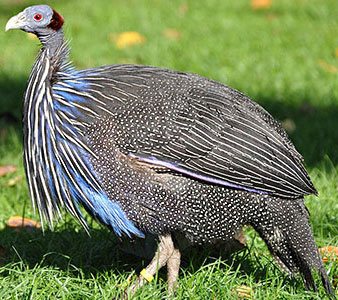

Traditionally, if the rules for keeping guinea fowls are not violated, they begin to have sexual maturity at the age of eight months. From that time on, they already rush freely. If they are grown not in a household, but in a professional one, then they begin to produce eggs after six months.
Usually, puberty in them can begin both in winter and in autumn, but they rush fully only from spring and not earlier. In addition, this period still strongly depends on the temperature outside, how long the daylight hours and the availability of all the necessary vitamins in the body. Therefore, if it shifts in some way, then this directly indicates that any of the above indicators did not reach the required norm or significantly exceeded it, which is also wrong.
On average, the standard egg production of guinea fowls can vary from 70 to 180 eggs per year. This number depends in part on the area where the birds are raised, and in this case there is no exact number. For example, in Hungary it does not exceed 170 pieces per year, and in France, England and Canada it can reach 190. History is also known for records - 300 pieces and more. This suggests that the potential of guinea fowls is quite high and depends solely on the correctness of their maintenance and feeding.
In principle, guinea fowls are considered a late maturing type of bird, because their maturation period of 8 months is considered quite late. They are also distinguished by a change in the rate of laying, which can fluctuate in 2-3 months with periods of damping. For the first time, laying hens can give up to 6 eggs in a row, after which the cycle grows noticeably and at the end of the breeding period decreases and so on constantly. If the birds grow in a rather mild and relatively warm climate, then they rush already at the beginning of March and practically until November. The peak for this falls on May-July.
It is worth noting that the productivity of guinea fowls differs markedly depending on their color. For example, gray individuals give no more than 90 eggs per year, blue - 100, white 110. It is these differences that prevail more in terms of productivity than pedigree ones, as usual.
How to feed the guinea fowl?
The organization of feeding guinea fowls at home should be approached taking into account the age and season of the year. Many breeders feed royal birds in the same way as chickens.
The basis of the diet is grain mixtures (about 50 g / day) or compound feed (about 160 g / day). A prerequisite is the addition of herbs and vitamins.
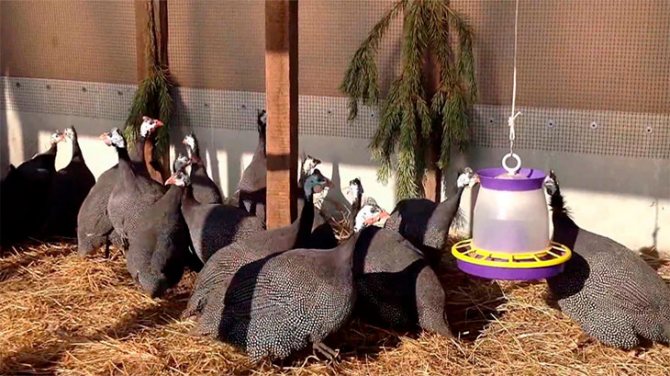

The list of products that guinea fowls willingly eat is as follows:
- boiled vegetables (carrots, beets, potatoes);
- meat waste;
- grain (corn, barley, oats only in crushed form) or compound feed;
- fresh herbs and vegetables growing in the garden, in the warm season, in the cold season - hay and needles;
- vitamin and mineral supplements.
Guinea fowls are supposed to provide three meals a day.
In the morning and at lunchtime - these are wet mash, in the evening - grain crops. In the presence of free range (especially in the autumn-summer-spring period), the need for ready-made feed is significantly reduced. Royal birds do not harm the plantings, they can be freely walked in the garden. They willingly eat insects, bugs, spiders, green plants. One of the favorite treats is the garden pest - the Colorado potato beetle.
It is important for the bird's body to provide a sufficient amount of carotene, so in winter they need to be fed with needles.
It can be given only in cold weather, since the content of essential oils increases in spring and summer, and the needles become dangerous.
At the onset of active egg-laying, the feed is enriched with calcium. Chalk, bone meal, fish dust, fresh herbs are introduced into the daily diet. By April-May, it is necessary to increase the total amount of food per bird by 30 g.
For the prevention of intestinal infections, once every 14 days, guinea fowls should be given a light pink solution of potassium permanganate (manganese).
Give baker's yeast daily (once). It is useful to give sprouted grains, add vitamin B or other mineral supplements (you need to add them separately).
Feeding of young animals begins immediately after birth.
In the first days of life (5-7 days), the guinea fowl are fed with boiled eggs, ground wheat, cottage cheese and greens of nettle, clover, meadow grasses, yogurt, then dry grain is added. It is better to alternate: in the morning - grain, in the afternoon - a wet mixture, in the evening - a dry grain mixture.
The first month of life, the chicks are given food in small portions 8 times a day, from 1 to 2 months - five times, then 3-4 times a day.
Fattening for meat
Fattening of guinea fowls for meat begins at the age of four months. To do this, flour dough and steamed roots are added to the usual diet. It is also necessary to provide free range on the pasture.
However, some farmers feel that special feeding conditions are not required. With proper maintenance, royal birds quickly gain weight: upon reaching 4 months they are ready for slaughter, since they reach 1200 - 1500 g.
What is the difference between guinea fowl eggs and chicken eggs?
As you know, guinea fowl eggs are in many ways superior to chicken eggs. First of all, they differ in that they have properties that persist much longer. This ensures that there are no problems with collecting the required number of eggs for further incubation.
In shape, they are slightly narrowed at the sides, like a triangle. The average weight of one egg is 40 grams. They are also distinguished by a rather hard shell and an unusual color, which can be almost brown, and sometimes speckled.
Collecting is best done in the first half of the day and only after that let the birds go for a walk. It is advisable to fold the eggs with the blunt end up, so they last longer. It is very important to clean them of contamination, because these eggs will not be suitable for further incubation. For storage, it is important to use a cool room with a temperature not exceeding 6 ° C.
How many eggs do guinea fowls give, and what does this number depend on?
Like all laying birds, these can produce different numbers of eggs even at established annual rates. It depends on many indicators, which necessarily include the correct feeding, care and maintenance.
Those individuals that were previously selected specifically for laying must be properly prepared. For this, it is important to give them food that contains the required amount of vitamins and components. You should always feed the birds twice a day - morning and evening. If the guinea fowl eats well and walks well, it can easily produce 120 eggs, which is average.
It is very important to understand when they begin to incubate eggs, productivity often decreases, because at this time they physically cannot lay, as they are busy incubating small guinea fowls. By the way, at this time they need special care and supervision, because they can hatch chicks in such a place that then it will simply be impossible to find them or even get them. That is why it is important for them to prepare the place in advance and let them get used to it, so that later they themselves come there.
Features of caring for the offspring of guinea fowls
Proklyov
The Caesars come out of the shells gradually. First, they begin to pierce the shell under the shell. Then make the first bites on the top layer of the shell. After the first cracks appear on the surface of the egg, you can hear the first squeaks of chicks.
The very exit for these birds takes a long time. The process can take at least a day. At the same time, babies are born with varying degrees of development. Some are born feathered, with a confident balance and good activity. Others do not hold well on their paws, are not completely covered with down, and are still rather weak.The latter can be easily distinguished by the way they try to huddle against the walls of the incubator in search of support. Some individuals may not move for several hours. Do not be afraid. If the chick is breathing, it will most likely get up on its own a little later.
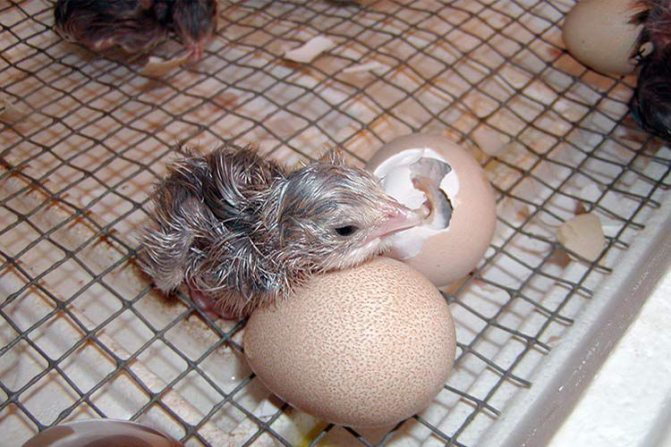

Newborn chick
Stronger guinea fowls are transferred to a brooder after 2 hours. The rest are allowed to warm up, dry, gain strength longer. During this period, the device is opened no more than 1 time so as not to chill delicate organisms with a sharp influx of cool air.
How to transfer chicks to a brooder
The brooder is pre-disinfected and warmed up to 37C. Prepare boxes, warm the bedding for them. Cleanse your hands. Keep your palms warm. Chicks are taken with a full palm. You can't grab them by the wings, legs. The remains of the shells are carefully removed with your fingertips. The movements are smooth, so as not to injure or frighten the kids.
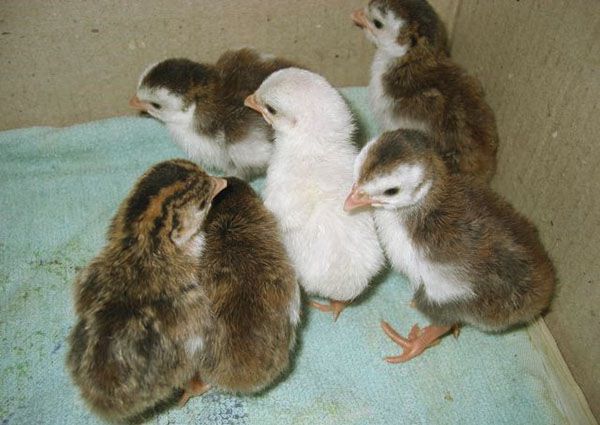

Strong young guinea fowl
First feeding
10 minutes after transfer to the brooder, give the first food:
- Chopped boiled guinea fowl or quail eggs are mixed with a small amount of chopped young nettle;
- Up to 6 feedings are carried out per day.
From the 14th day they are allowed to walk to accelerate growth, and by 3 months the chicks grow to the size of adults.
Prices for a ready-made brooder for chickens
Chicken brooder
Features of breeding guinea fowl at home
Given the fact that guinea fowls are initially considered very freedom-loving birds, they quickly and easily adapt to the conditions of the household and allow themselves to be kept even indoors, no matter how many of them are there. But for their normal health and healthy development, it is desirable to create free access to the street for them. The main thing is to remember such an interesting moment - at night you should always send them to sleep in the room, because if they do this on the street, then over time they will very quickly turn wild.
That is why, creating for the guinea fowls their favorite environment of free life, it is necessary to teach them to come to the feeder at a certain time and not let them walk in the morning until the moment when they lay their eggs.
Based on the vast experience of many farmers regarding the maintenance of guinea fowls, it turned out that these birds are completely unpretentious and do not require any special conditions and premises for life. They also easily and painlessly survive the cold, moreover, they quickly get used to it. By the way, they can be easily kept in the same room with chickens, because, as already mentioned, they will always find a common language without conflicts.
In the summer, they require the creation of large walks, which are best fenced off with a high net of ordinary wire, at least two meters in height, in order to protect themselves from the loss of birds, which can easily fly over. Of course, it is very important that the place where they will walk has natural vegetation, in particular, a lot of bushes, so that the guinea fowls feel in their natural environment.
Just in the middle of a standard walk, you can build a small house, it will be especially relevant in the summer. Birds will always be able to spend the night there closer to night, if they do not want to return to the poultry house. Usually they can rarely fly over the barriers, especially in large numbers, but there are still isolated cases, so this should be monitored with special care.
Guinea fowl in behavior is very similar to a chicken, for example, she also loves to dig in the ground. That is why it is very important to have sand in their walking area, as well as ash baths.
Diseases of guinea fowl
You cannot tell everything about guinea fowls at home without telling about the pathologies that occur in this species. Timely identification of symptoms, correct prevention can often save an entire livestock. Diseases of domestic guinea fowls are infectious and non-infectious. Infections include the following pathologies:
- Trichomoniasis. Caused by the intracellular parasite Trichomonas.It is manifested by diarrhea, loss of appetite, sick guinea fowls scream quietly, without timely help they die in a few days
- Pasteurellosis. Caused by bacteria, the main symptoms are gray-yellow diarrhea, inactivity, high fever
- Pillorosis. Very often, the entire herd, both adults and chicks, perishes from the disease. In birds, behavior changes, white-yellow diarrhea appears, coordination is impaired.
- Mycoplasmosis. The disease is caused in guinea fowls by protozoa, the respiratory tract is affected. The main symptoms are cough, shortness of breath, sneezing, nasal discharge.
- Worms. Often they pass asymptomatically, in advanced cases the bird grows poorly and gains weight, loses activity, feathers become dull.
The most common non-communicable diseases are:
- Dyspepsia
- Avitaminosis
- Ophthalmitis
- Rhinitis
- Gout
If you properly care for the bird, feed it fresh food and keep the chicken coop and aviary clean, they will not get sick. Timely vaccination will protect them from infections. If a dangerous epizootic occurs in the herd, the entire livestock is sent to the slaughter. The room is thoroughly disinfected. It will be beneficial for the guinea fowl if you see your veterinarian in time. Perhaps the bird can be saved. After all, only a doctor can determine what the guinea fowl is sick with and what it needs for treatment.
Proper maintenance and care
In nature, as you know, guinea fowls prefer to live only in pairs. If you breed them in the household, then there is no special need for this, it is enough just to have at least one male for 4 females and this will be quite enough. If you keep them this way, then they can even sit in turns on the same nest, no matter how many there are, which will greatly simplify the collection of eggs.
Traditionally, female guinea fowls begin to rush at the end of February, but mate fully only in March. The fact is that in males, puberty occurs a little later, not earlier than the beginning of spring, and best of all, when the air temperature warms up to at least 17 ° C.
Power features:
You can feed guinea fowls in much the same way as chickens. In this they have no special differences. They are great at eating grain, regular chicken feed and a lot of greens. That's just the greens should be in abundance, its amount should reach 50% of the total daily diet. Guinea fowls also eat well zucchini, pumpkin, cucumbers, apples and boiled potatoes. In fact, they eagerly eat everything that grows in the garden.
By the way, as we already know, they are very fond of pastures, but not everyone can afford to equip enough space for this, so some simply let the birds out into the garden. In this case, you should not worry about the beds, because the guinea fowl is distinguished by its good breeding and will never rake anything, but on the contrary, it usually walks between the rows and calmly looks for various bugs and worms, and sometimes eats up the whole weed, which should be noted as a huge advantage of this kind of walking.
Organization of content
To obtain economic efficiency from their maintenance, it is necessary to purchase a thoroughbred bird. See the table for the distinctive features of the most popular breeds.
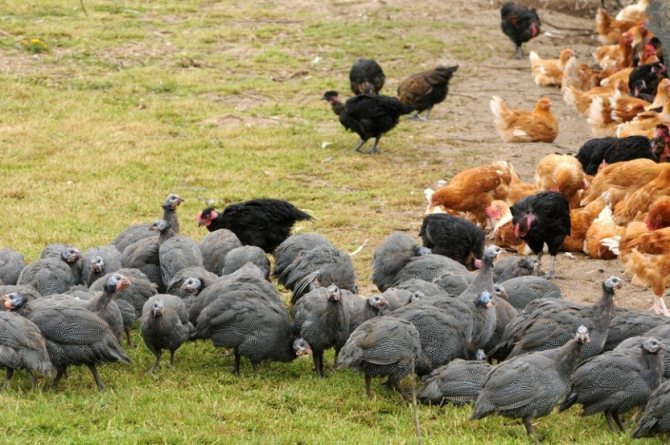

Poultry yard
Many write that keeping them at home is easy. There is a little guile in these words. It is that the bird is really hardy, almost does not get sick, unpretentious, but keeping it is very troublesome in terms of walking. She flies well, can take off to a height of two meters. In addition, he also runs fast. As a result, if she breaks free, it will be difficult to catch her.
Guinea fowls are quick-witted, cunning and clever. So please be patient. They are always tempted to dig under trees and bushes. There they look for worms, beetles, larvae, all kinds of animals harmful to our gardens and vegetable gardens. This is good news, but they can lie down in the tall grass, and look for them then. Yes, and all sorts of predators fly and run, after them there is no one to look for.
Therefore, so that there is no running around and hassle, it is necessary to organize a mobile walk (a portable fence and a net), and also cut one wing. Only the mesh must be picked up with the correct cells, otherwise the guinea fowls, trying to take off, can suffocate in them.
In order for the guinea fowls to always return home willingly, they must be lured with delicious food. They should know that in the evening all kinds of “goodies” await them. It can be
- raw or cooked vegetables
- eggshells,
- food waste,
- bread.
Grain, as a rule, is "not quoted" by guinea fowls for these purposes. And so, knowing that a delicacy awaits them, they themselves will come running and will wait for it.
Wing clipping
Flying birds often have their fly wings clipped, but this does not give the desired effect. As the wings grow back. If pruning is carried out on two wings, then the bird will keep balance, adapt, and will also take off and fly over the hedge. Therefore, the best option is to stop the hand of one of the wings at an early age.
It is necessary to carry out this operation in the first days of their life. The more you feel sorry for them and procrastinate, the more painful this procedure will be for them.
It is necessary to cut where it is shown in the figure with a red line and scissors.
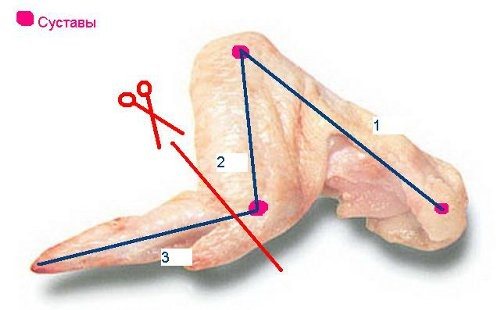

Wing trim example
This is a conditional scheme. Joints are marked on it with pink dots. Blue straight lines indicate sections of the wing with conventional names:
- - shoulder,
- - forearm,
- - brush.
Thus, by cutting off the tip of the hand to the joint, you will not give the opportunity to grow long flight wings on it in the future.
Press the cut point with a cotton swab, and if blood appears, fill it with brilliant green. It is better to carry out the operation at night and not selectively, but to all young animals at once. Then the curious fellows will have no “questions”. If you do it to someone alone, then it is better to plant it after the procedure.
Accommodation conditions
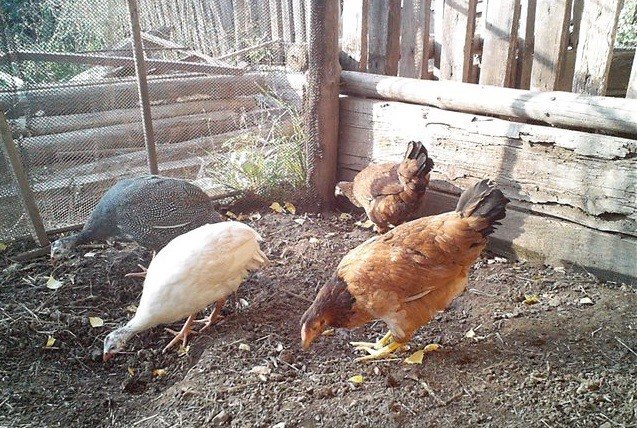

Good neighborly relations have been established
This bird is hardy, living in a poultry house, always keeps in a flock. She does not bully other birds, but she can stand up for herself. Therefore, it can be safely placed in a common poultry house.
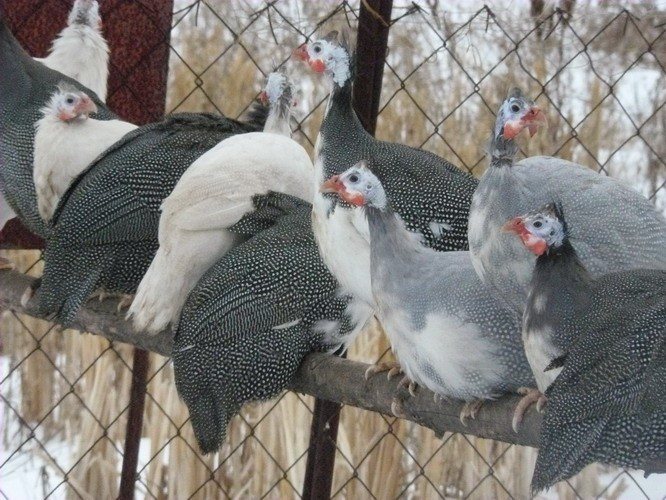

Guinea fowl perched
For them, the main thing is the presence of a roost, and so you can use any room. The most unpleasant thing is that it is almost impossible to accustom guinea fowls to the nest. Wherever they want, they will arrange the masonry. It remains for us to adjust to them.
The aviary has already been mentioned. It should be fenced with a fence (2 meters), and a camouflage net should be well pulled on top.
Lighting
As with all birds, the egg production of guinea fowls depends on the length of daylight hours. With a daylight hours of 17 hours, the annual egg production of one guinea fowl can increase by a third.
When rearing young animals, the lighting is regulated strictly according to the scheme.
- For babies from days to three weeks - the light is on around the clock.
- Beginning at three weeks of age, cut one hour per week.
- At the age of five months, the daylight hours in the poultry house lasts 8 hours.
- From the age of six months, daylight hours increase by one hour.
- The increase in the day continues until a duration of 14 hours is reached.
Winter maintenance
It is no different from keeping another bird in the house.
Despite the fact that guinea fowls are hardy and are not afraid of frost, there is no need to create specially Spartan conditions for them. On the contrary, when they stop rushing (this will happen in October), it is necessary
- dry, insulate, disinfect the poultry house,
- check the ventilation and eliminate drafts,
- lay and prepare a supply of warm bedding so that it is enough for the whole winter,
- check the lighting and take care of the heater,
- equip an aviary for walking birds in winter (in the absence of frost, it can be released there).
How to properly keep guinea fowl in winter?
For this time of year, it is very important to create the driest and warmest living conditions for the birds. The house should not be less than 18 ° C.Best of all, when it is heated, then there will never be problems with temperature changes. It is also very important that the flooring is warm and warm. For this, you can use ordinary sawdust or straw.
It is important to do standard room cleaning at least once a month and change the bedding regularly accordingly. In order for the birds to develop normally, they simply need fresh air in winter. In this case, you can use ventilation or at least some kind of room ventilation.
There are also certain requirements for lighting - it must be quite long, at least 15 hours a day. It is better to build a perch at least 50 cm above the floor. Guinea fowls can be allowed out for walks if the temperature outside does not fall below -10 ° C.
In winter, exactly the same and at any time, you need to feed the birds fully twice a day. These should be standard feed, and there will be no extra mash of sour milk and various food waste in the morning. With waste, it is advisable not to throw everything together, but alternate them day by day. Well, for the evening, whole feed or compound feed is perfect. It is very important, in addition to the main feeders, to put additional containers for chalk and gravel, where sand can also be added. Guinea fowls are very fond of digging in such places. By the way, if you do everything as described in the maintenance and feeding, then they will rush freely for a whole year.
Guinea fowl, or the king's bird as breeders sometimes call it, must be kept under special conditions in order to lay eggs. First of all, the room should be clean and warm so that the bird feels great. Guinea fowls can be kept with other birds, so breeding them becomes very profitable. All this will help the breeder to create healthy offspring and grow the business.
Guinea fowl, or royal bird as breeders sometimes call it, must be kept under special conditions in order to lay eggs
Guinea fowl eggs obtained during the incubation period can be stored for a very long time. Among the features of eggs, the following factors should be noted:
- The weight of 1 egg ranges between 40 and 42 g.
- The shape is triangular.
- The shell is light brown or reddish in color. On the entire surface, you can see small dots, blotches that have a different shade.
- The shell is hard.
Guinea eggs that are intended for incubation should be selected based on how clean and whole they are. Additionally, it is recommended to carry out ovoscopy by checking the weight. This involves examining the guinea fowl fetus under a special device called an ovoscope. Then they are shined with ultraviolet rays to see the internal structure.
Each bird fruit should contain only 1 yolk. The shell thickness should be 0.5 mm. Guinea fowl eggs should be placed in a dark, cool room, where a constant temperature regime is set. You need to fold them with the blunt end up. Each egg has a fertility rate of 81%, and if selected carefully, 75% of the offspring can be obtained from each testicle. Farmers need to pay special attention to these traits in order to get good chicks.
The process of hatching chicks, and then their hatching, lasts a certain time. For example, babies from the shell are selected within a day.
Guinea fowls hatch testicles in a certain period of time, which depends on the breed, breeding conditions, maintenance, nutrition. If all these factors are observed at the proper level, then the guinea fowls will begin to lay at 8 months or a little earlier.
First of all, the room should be clean and warm so that the bird feels great.
Farmers may well be able to shorten the time between laying eggs while increasing the amount of egg production. To do this, you need to adhere to certain recommendations:
- Guinea fowl eggs are able to lay within six months after birth.To do this, you need to keep the birds in a special type of shed, comfortable cages.
- The diet should contain feed and compound feed, which contributes to the growth and development of poultry.
- The barn must be equipped with flooring and kept birds on the floor, which will allow you to receive guinea fowl eggs in winter and autumn.
- There should be enough light in the room, both for the flooring and the cages.
- The diet should be regular and balanced.
- It is necessary to carry out top dressing, which will include vitamins, minerals, trace elements.
- Meals must be mandatory 2 times a day.
- During the day, birds should be able to walk freely, nibble the grass.
- The optimal temperature regime should always be the same and of high quality, without sharp fluctuations.
Guinea fowl eggs under such conditions will be of high quality, and egg production in birds will begin early enough. If excellent conditions are created for breeding guinea fowls, then the birds will bring a fairly large number of eggs. For example, a year from 1 guinea fowl, you can get 120 pieces. Productivity will begin to fall if the female sits on the nest and prepares to lay eggs for breeding. It is impossible to obtain egg products from the laying hen until the time of laying eggs to obtain future chicks.
Bird characteristics
Outwardly, guinea fowls look like large chickens. They have a large ovoid body with a characteristic hump on the back, a small head, and a horn-like outgrowth on the crown of the head. Guinea fowls have a hook-shaped strong beak, under which there are red fleshy outgrowths - a beard. Birds are distinguished by dense plumage, which is directed downward from the spine. To escape danger, guinea fowls can discard their tail feathers. The legs of birds, like those of broilers, are powerful and hardy.
This species of birds was domesticated relatively recently, therefore, guinea fowls differ in activity and mobility that are not characteristic of chickens, geese or turkeys. They retain some of the habits characteristic of wild birds: the habit of laying in secluded places, which is why you have to look for eggs throughout the house; the desire to stay in the pack; attempts to fly away when strangers or animals approach.
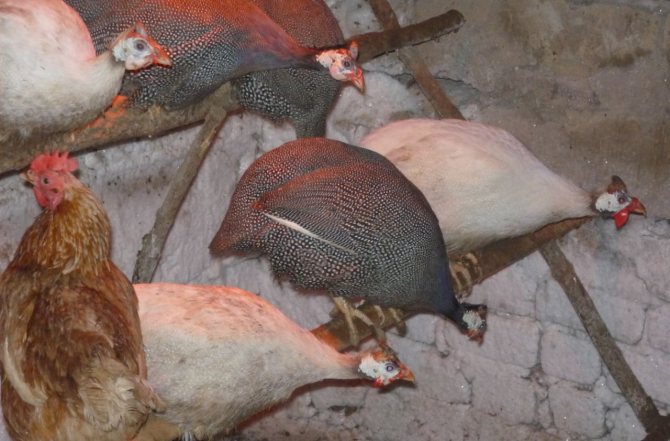

To date, four breeds of guinea fowls have been bred in Russia.
Keeping the guinea fowl does not require any complex equipment or specific feed. The bird feeds on seeds, plant food, insects and their larvae. At the same time, guinea fowls can spend most of the day in the warm season in the garden or in special areas for walking. Some farmers keep birds in special enclosures, in which the movement of birds is sharply limited. This reduces the egg production of the guinea fowl, but stimulates a rapid gain in mass.
Guinea fowls are very shy. They get along well with other birds: geese, turkeys, chickens. However, guinea fowls react to dogs, strangers, loud sounds and other stimuli with a loud cry and an attempt to fly away. Therefore, to keep the birds, you need to determine a quiet place. It is also recommended that 1-2 people take care and feeding of guinea fowls.
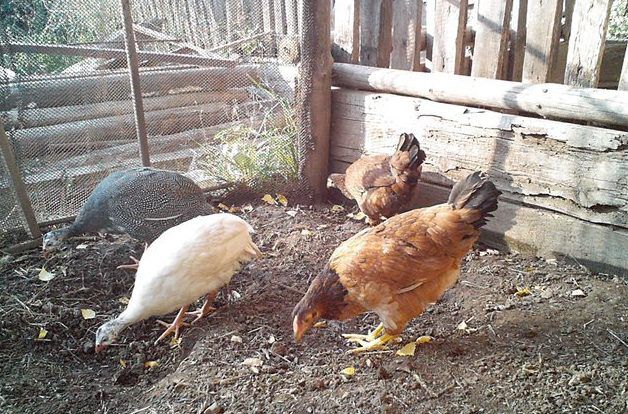

Guinea fowl can be bred with other birds
In the wild, the egg-laying season for birds begins in the fall-winter months, when heavy rains end in Africa. Domesticated birds also lay more eggs during warm and dry seasons, and hatched chicks do not tolerate dampness and lack of light. However, grown chicks at the age of 2-3 months successfully adapt to any conditions and even tolerate a rather harsh climate well.
Guinea fowl eggs have an elongated pear-shaped shape, they have a strong shell that prevents the penetration of various pathogens. This ensures the long-term preservation of the eggs. At temperatures around 2-5 ° C, they do not deteriorate within 3-4 months.
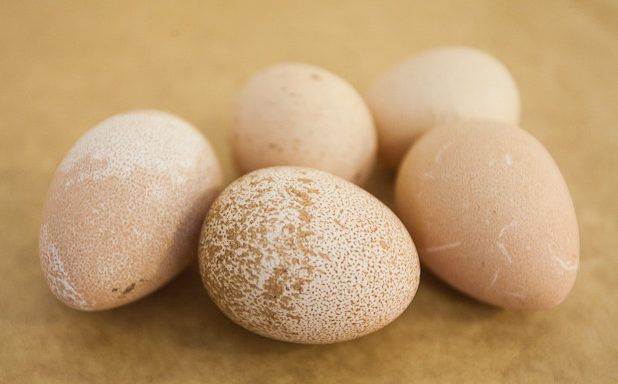

Guinea fowl eggs
Characteristics of rocks
Guinea fowls are rather large birds. The mass of an adult is from 1.5 to 2 kg.At the same time, the consumption of feed for growing guinea fowl is relatively small and amounts to about 3-3.5 kg per 1 kg of weight gain. The most popular in Russia are three breeds of guinea fowl.
| Photo | Name | Description |
| Gray speckled or silvery gray | Differs in delicious dietary meat. The female weighs approximately 1.5-1.6 kg, and the male 1.8 kg. The egg production of one individual is on average about 87-90 eggs per year, while the weight of each is about 45-47 grams | |
| White-breasted Zagorskaya | The birds are distinguished by the absence of plumage on the head and neck, the plumage is gray, the chest and belly are white without blotches. The breed was bred by breeding silver-gray guinea fowls and Moscow roosters. The weight of the female is about 1.7-1.8 kg, and that of the male is up to 2.1 kg | |
| White Siberian | The breed was developed relatively recently. Birds are distinguished by high egg production: the female lays about 115-120 eggs per year. These guinea fowls have a characteristic matte milky or white color, on which, upon close examination, you can find small bright white blotches. The weight of the guinea fowl is about 1.6 kg, and that of the caesar is 1.8-1.9 kg. |
Females begin to lay at about 7-7.5 months, and the egg-laying season can last from six months to 12 months. During this period, one individual lays up to 85-90 eggs. Fertilized eggs hatch strong chicks, whose survival rate is more than 95%. Breeding guinea fowls does not require complex equipment or many specific skills, but it has its own characteristics.
What affects egg production
Guinea fowls that will play the role of laying hens must be prepared in advance for laying hatching eggs. Feed the birds should be given vitaminized, combining it with compound feed. You need to feed 2 times a day, doing it in the morning and in the evening. During laying, eggs need to be collected on time.
Farmers may well be able to shorten the time between laying eggs while increasing the amount of egg production.
It is important to ensure that the products carried by the guinea fowl are collected, otherwise the bird will incubate them. This can affect the decline in productivity.
You need to watch the bird very carefully - the guinea fowl can lay eggs in places where it will be difficult or impossible to find them. If all the conditions are met, you can get not only high-quality offspring, but also use the eggs of the guinea fowl for food. They differ from the egg products of chickens or quails, because they are very tasty.
Who are guinea fowls?
Guinea fowls are distant relatives of turkeys and chickens. The body of this bird is elongated, has the shape of an oval. Their head is small, it has an unusual decoration. In private households, the gray speckled variety is more common, but there are others: Zagorsk white-breasted and Siberian whites.
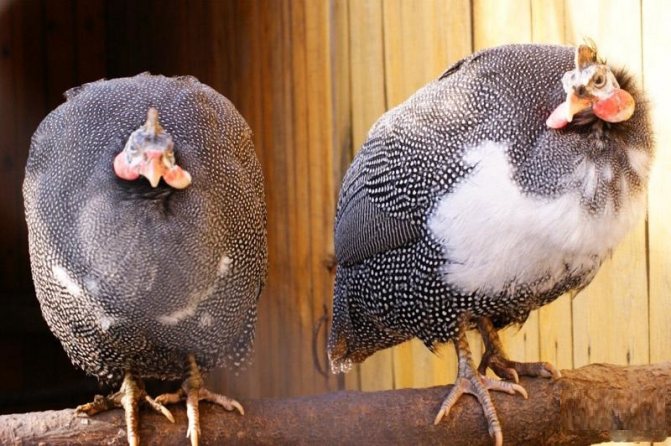

Zagorsk white-breasted guinea fowl
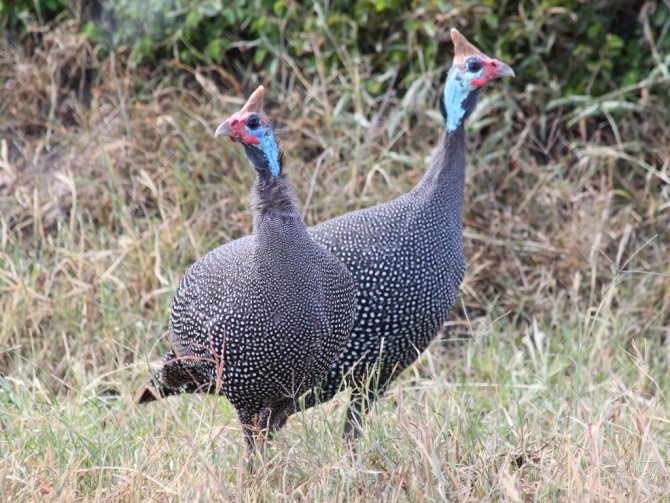

Gray speckled guinea fowl
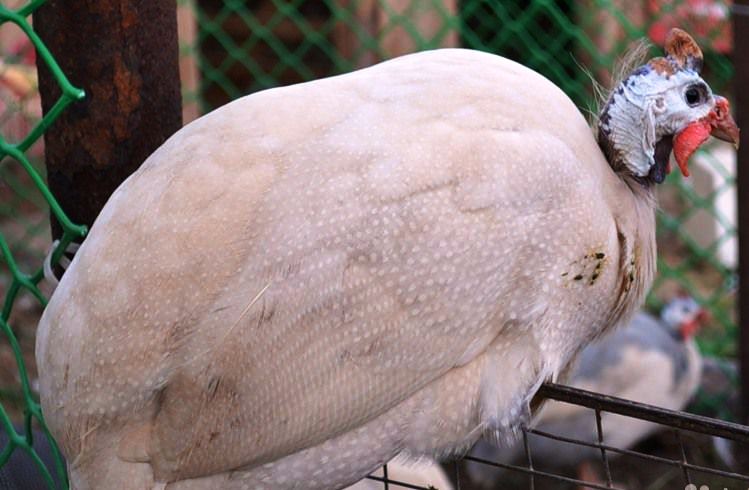

Siberian White Guinea Fowl
Useful properties of eggs
The eggs of these birds are extremely tasty. In addition, they have numerous beneficial properties:
- They contain a huge amount of vitamins, minerals, amino acids. This applies to both the protein and the yolk.
- Protein has bactericidal qualities.
- They are used in the treatment of a large number of diseases. For example, with anemia, diseases of the central and peripheral nervous system, eyes, gastrointestinal tract, metabolic processes.
- Useful for pregnant women and nursing mothers.
- Safe for those allergic to the eggs of other birds.
The shell contains calcium, which is easily absorbed by the human body, and more than 20 trace elements. For example, manganese, calcium, iron, copper, sulfur, silicon. Egg powder can be used to strengthen bones, fight various diseases. You need to take it 1 time per day, 1 tsp. With plenty of water. The testicles are used to make masks for the body, hair, or face.
You can eat guinea fowl eggs raw, boiled and fried. You can use them for making desserts, sauces, salads, baked goods.Only it is necessary to cook a little longer, since their shells are thicker than those of other eggs.
Feeding
Feeding guinea fowls and chickens is no different. Guinea fowls willingly eat compound feed, grain crops, herbs, vegetables. The diet can consist of almost anything that grows in the garden. Herbal food on the menu of these birds should occupy at least half of the daily volume. For the sake of variety, the flock will not give up cucumbers, pumpkins, apples, zucchini. Standard legumes, potatoes and carrots are a priority. On walks, they eat insects, berries, buds, foliage, seeds. Some people like to hunt mice, lizards and small snakes. Needles are also needed as a source of carotene.
It is not difficult to formulate a balanced diet for guinea fowl. In summer, one individual needs up to 200 g of food, in other seasons - 170 g per day. The approximate daily allowances for foods are shown in the table below.
The daily diet of guinea fowls.
| Product | Weight in gr. |
| Oats | 20 |
| Barley | 20 |
| Corn | 21 |
| Wheat bran | 20 |
| Meat and fish meal | 5 |
| Carrot | 20 |
| Grass (nettle, clover) | 25-30 |
| Spruce needles | 15 |
| Fresh yeast | 6 |
| Shell rock | 3 |
| Fish fat | 3 |
| Salt | 0,3 |
| Millet | 10 |
Feeding is carried out 3 times a day, hourly:
- 6 hours - wet mash with herbs;
- 12 hours - wet mash with yeast and fat;
- 18 hours - dry grain.
If compound feed is used, it is soaked with morning mash or put dry in the evening mixture.
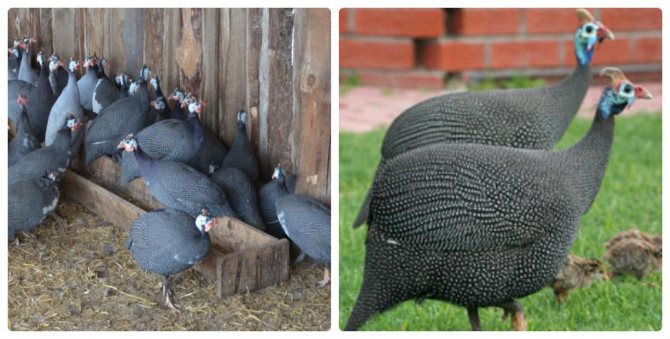

A collective meal of guinea fowls
Guinea fowls are gluttonous. They can greatly exceed the norm if not controlled. To maintain a healthy body condition, they need to move a lot, limit portions. Weighing and examination for excess fat are carried out every month.
Guinea fowl menu in winter
- From the end of November to the beginning of February, the mash is made with sour milk;
- The portion of needles is doubled or fat-soluble vitamin A is given to the standard rate;
- It is additionally recommended to add preparation B2
- From the beginning of February, fermented milk products are removed;
- Increase daily grain for hens up to 90-100 gr.;
- Animal fats are reduced;
- Place containers with chalk, sand and fine gravel.

